Swiss cabinet set for female majority
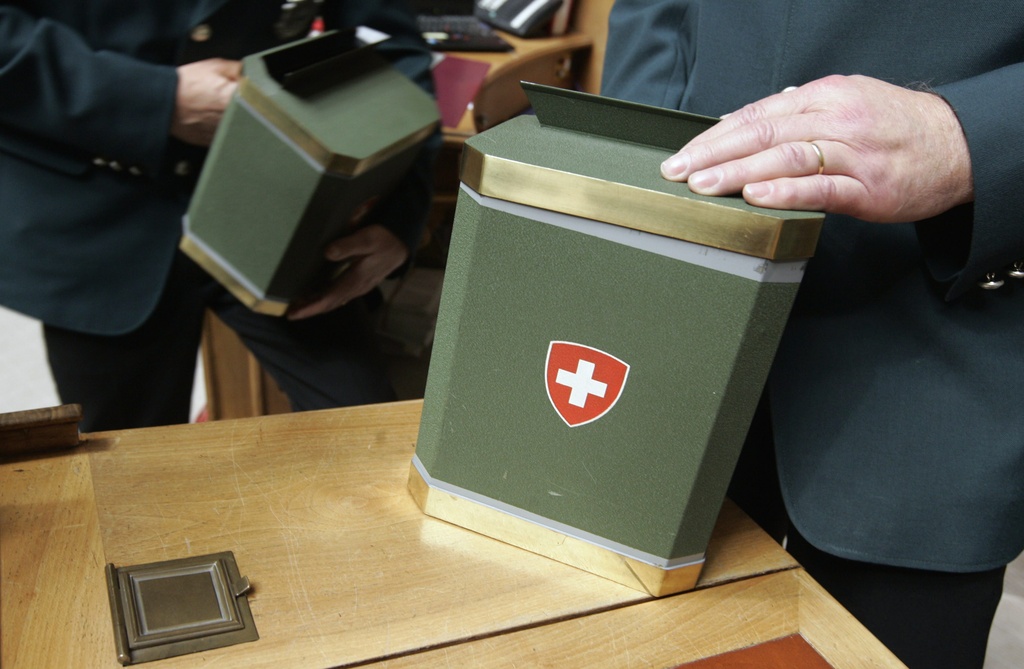
Parliament is due to elect two new members to the multi-party cabinet on Wednesday following the resignation of the finance and transport ministers.
The centre-left Social Democrats and the centre-right Radicals are widely expected to hold on to their seats despite challenges by two other parties. While the political make-up of the cabinet would remain unchanged, modern-day Switzerland looks set to have a majority of women ministers for the first time in its 162-year history.
A total of six official candidates are in the running to replace Moritz Leuenberger and Hans-Rudolf Merz, who step down 14 months before the end of the current four-year term.
The cabinet, made up of seven ministers who share responsibility under a system of collective leadership, presently has three female ministers.
As both the Social Democrats and the Radicals put forward at least one woman candidate chances are that the gender balance could be tipped 5-2 in favour of women, propelling Switzerland ahead of Scandinavian countries in terms of female representation.
The Social Democratic Party and the Radicals have two seats each, while the three remaining posts are shared out among the centre-right Christian Democrats, the Conservative Democrats and the rightwing Swiss People’s Party.
Lacklustre
The campaign in the run-up to election day has been relatively low-key compared with the media coverage of recent elections.
The prestigious Neue Zürcher Zeitung – traditionally close to the Radical Party and the business community – hopes for a normalisation of Swiss politics following the 2003 overthrow of a long-standing power-sharing arrangement between the main political forces.
“The current system cannot take any more upheaval, tensions and discrepancies,” the editorialist of the paper’s Sunday edition says.
The Zurich-based Tages-Anzeiger deplores what it considers a lacklustre campaign, very much in line with the general perception of Swiss politics as dry and downright boring –except on rare occasions.
“They are all so terribly dull,” the editorialist notes of the official candidates. “But tediousness is seen as ensuring stability,” the author points out, adding: “Yet Switzerland is stable enough; the country could do with candidates who do not behave the way they are expected to once they are elected.”
Hopefuls and outsiders
Two women of almost the same age, around 50, Jacqueline Fehr and Simonetta Sommaruga, feature on the ticket of the Social Democratic Party. Both have been in parliament for more than a decade and are considered highly skilled tacticians with support across party lines.
While Fehr stressed her working class background, Sommaruga came across as a moderate liberal candidate – ideal for Switzerland’s consensus politics, if not too perfect, as some of her critics allege.
The Radical Party seeks to defend its second seat with Johann Schneider-Ammann, a well connected entrepreneur and parliamentarian. His party rival, Karin Keller-Sutter, is more than ten years younger, and has made a name for herself as a member of the St Gallen cantonal government.
She appears to have made up for a lack of experience on the national stage with a charm offensive in Bern over the past few days.
The challenge of Brigit Wyss of the Green Party is not being taken seriously while the bid of Jean-François Rime of the People’s Party is seen as a tactical move by the rightwing to underline their claim for a second seat in cabinet.
Pundits
Whatever the outcome of the votes, Wednesday is a highlight of the autumn session – a major media event at the same time – and will mark the end of days of speculation.
Most pundits among parliamentarians, political scientists and journalists agree the party-political structure of cabinet is unlikely to be changed – barring last-minute surprises during the proverbial Night of the Long Knives in Bern.
The issue of the geographical origin of a candidate has lost some relevance but could still be a factor, just as the personal preferences of parliamentarians could enter the equation.
As the vote by a joint session of the House of Representatives and the Senate is secret, accurate predictions are impossible. None of the 246 parliamentarians has to reveal his or her choice.
And whatever the outcome, the new cabinet will meet next Monday to discuss the portfolios of the new members. Rumours of a cabinet reshuffle have been rife, with speculation Economics Minister Doris Leuthard could take over the complex transport ministry which includes also energy, environment and communications.

More
Government, ministers, president
The Swiss government consists of a cabinet made up of seven members.
There is no prime minister. The position of president rotates among cabinet ministers every year.
The cabinet should reflect the political, cultural and linguistic diversity of the country.
For 50 years cabinet posts were shared out among the four main parties – the Radicals, the Christian Democrats, the Social Democrats and the Swiss People’s Party – under an informal agreement.
The system known as the Magic Formula was thrown out in 2003.
A fundamental tenet of the multiparty cabinet is the need to reach consensus and that decisions are taken collectively.
Cabinet members are nominated by their parties, and are elected at a joint session of the two chambers of parliament.
The ballot is secret.
A candidate needs at least 50% plus one vote of valid ballot sheets to be elected.
The seven cabinet members have to be confirmed in their posts every four years in the wake of parliamentary elections due in October 2011.

In compliance with the JTI standards
More: SWI swissinfo.ch certified by the Journalism Trust Initiative

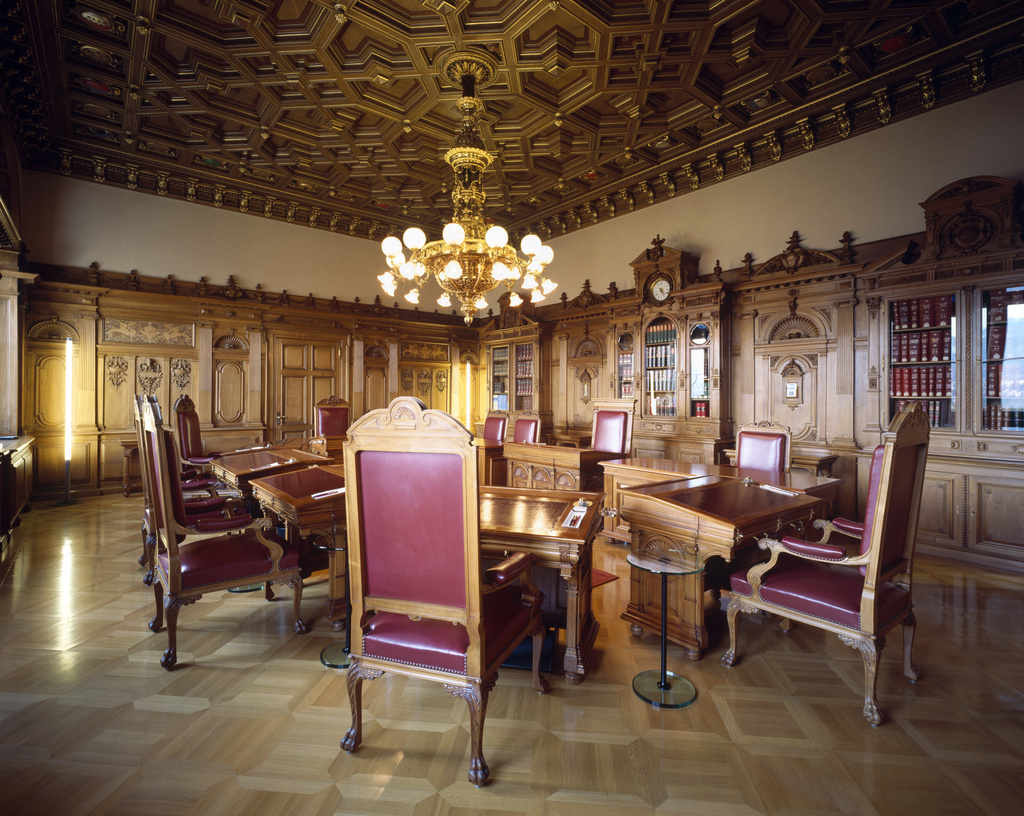
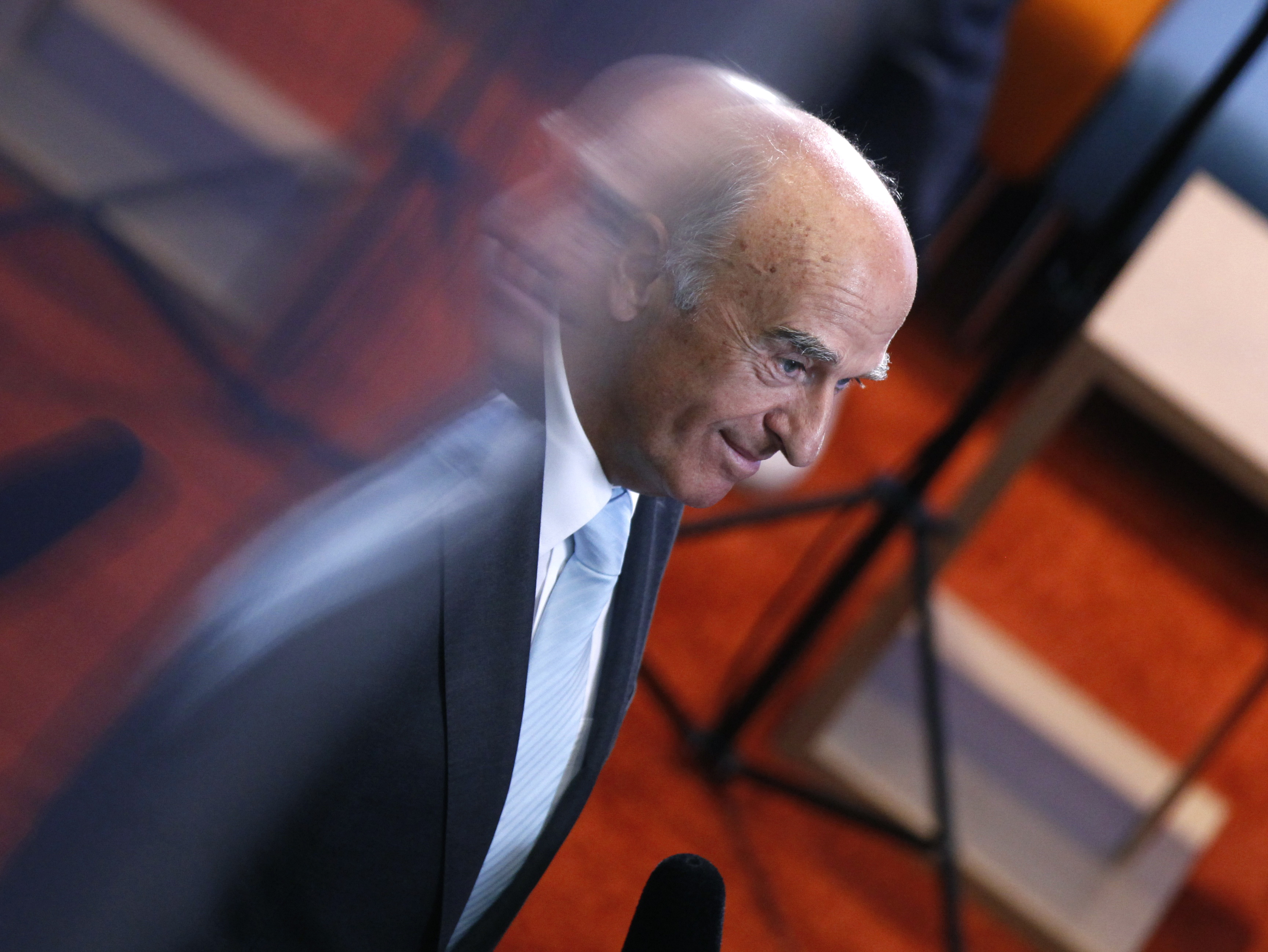
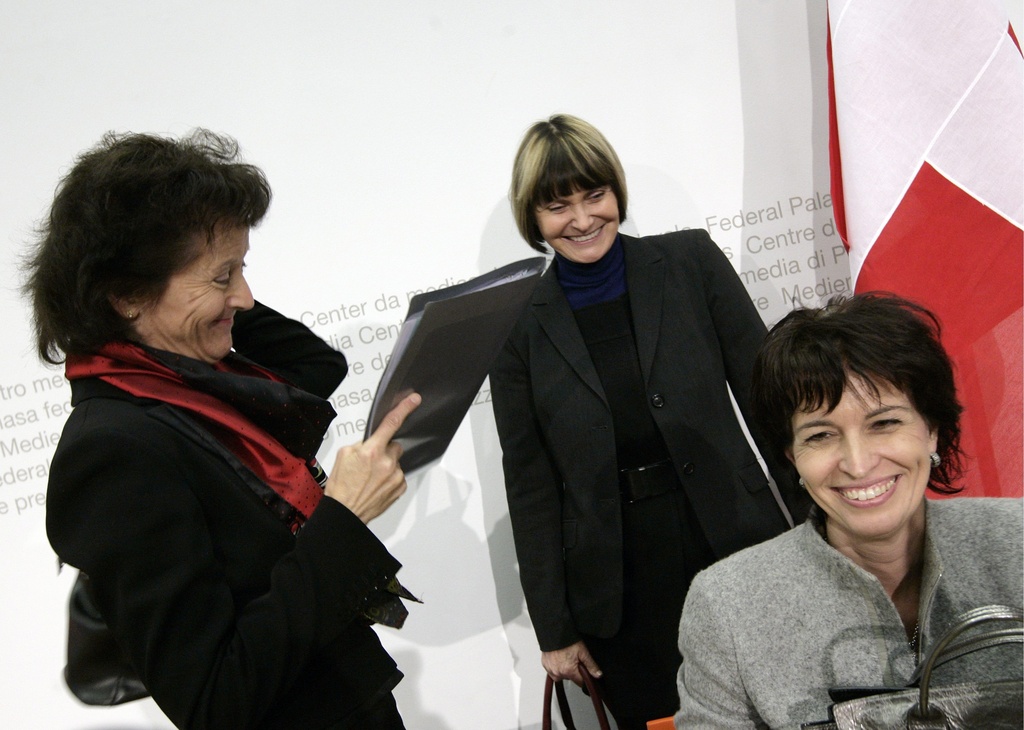

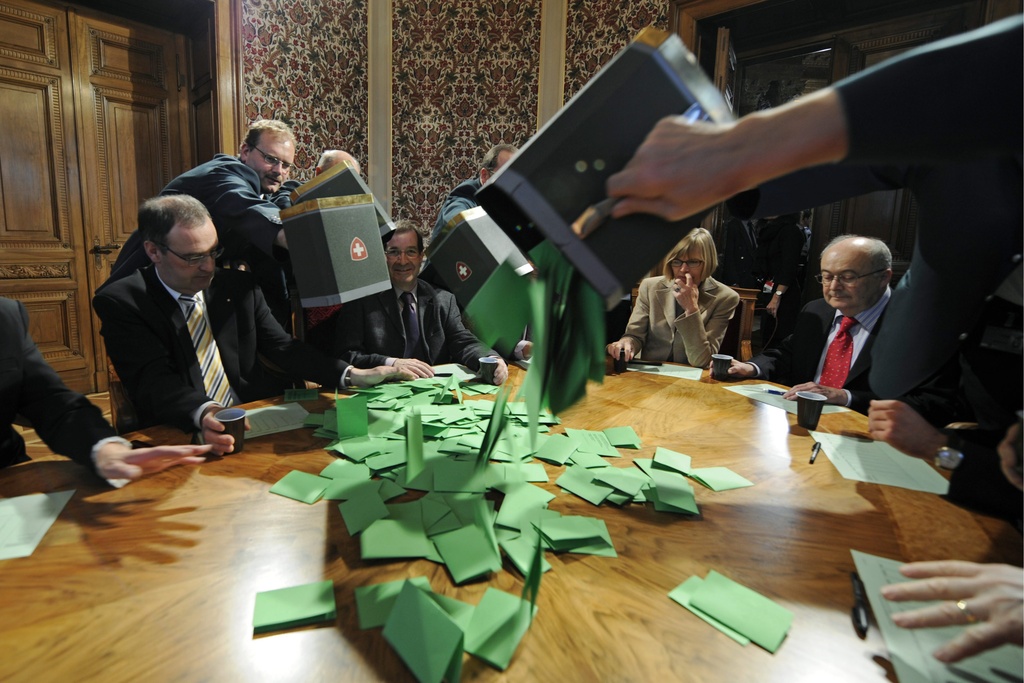
You can find an overview of ongoing debates with our journalists here. Please join us!
If you want to start a conversation about a topic raised in this article or want to report factual errors, email us at english@swissinfo.ch.